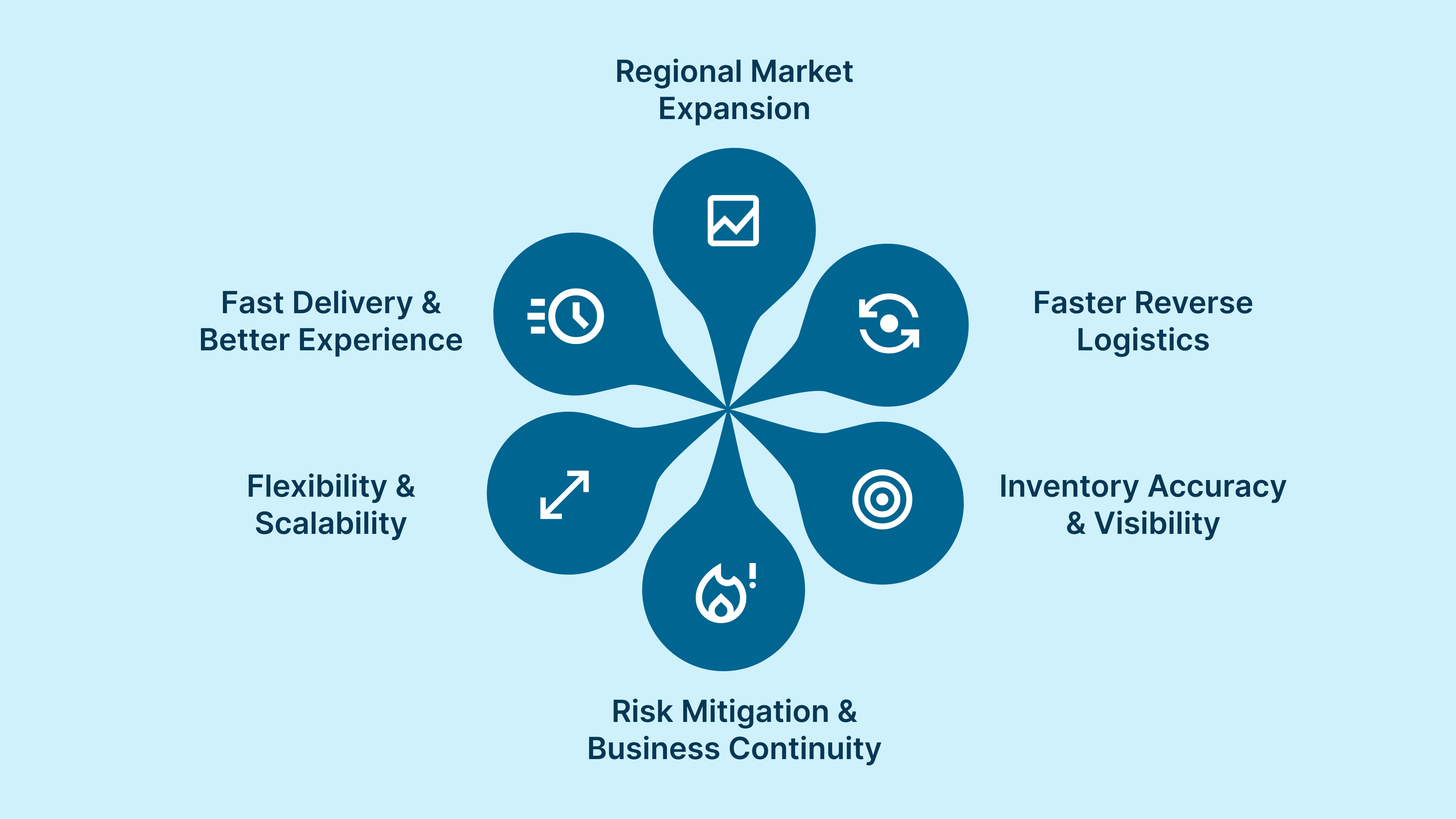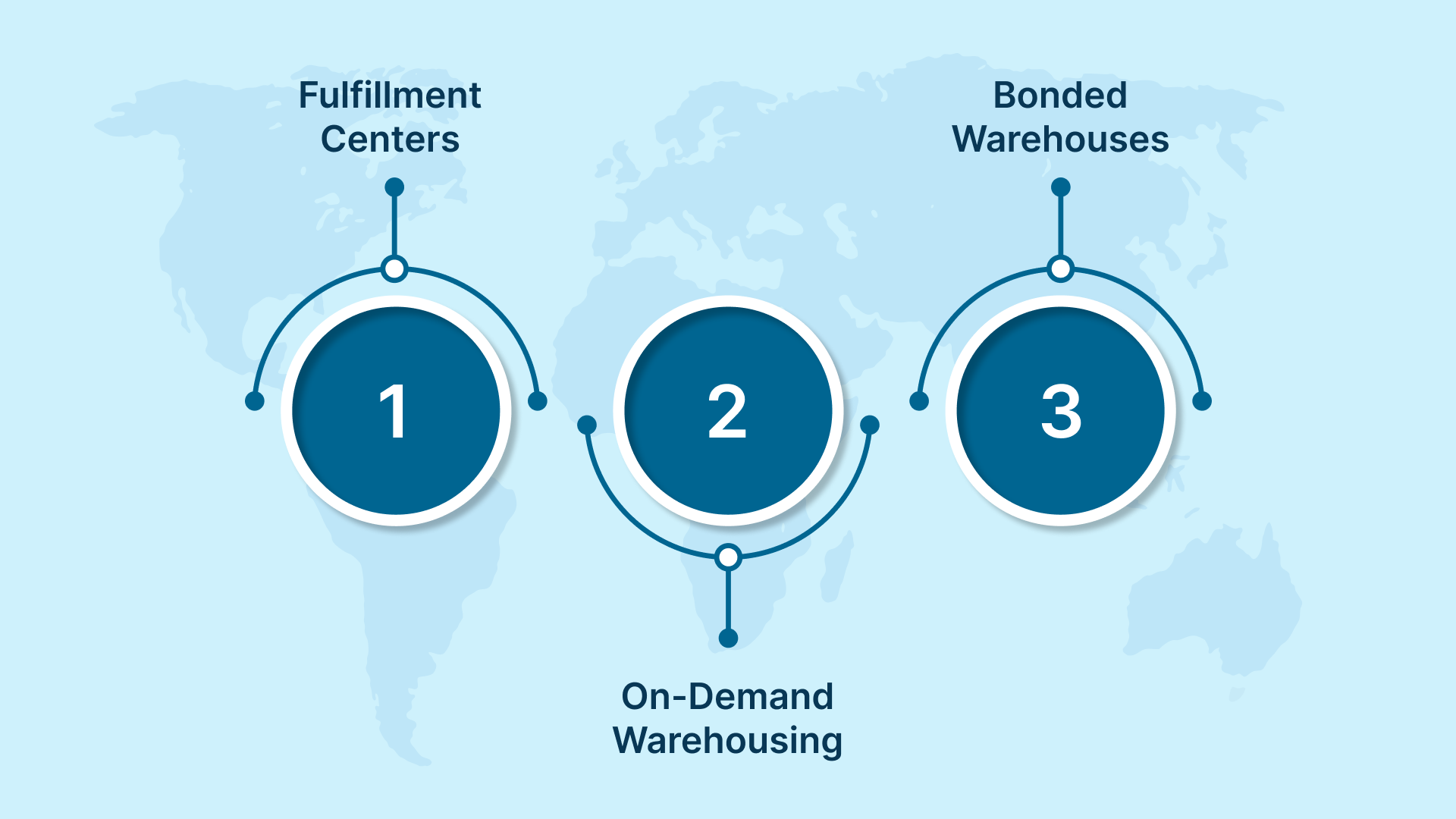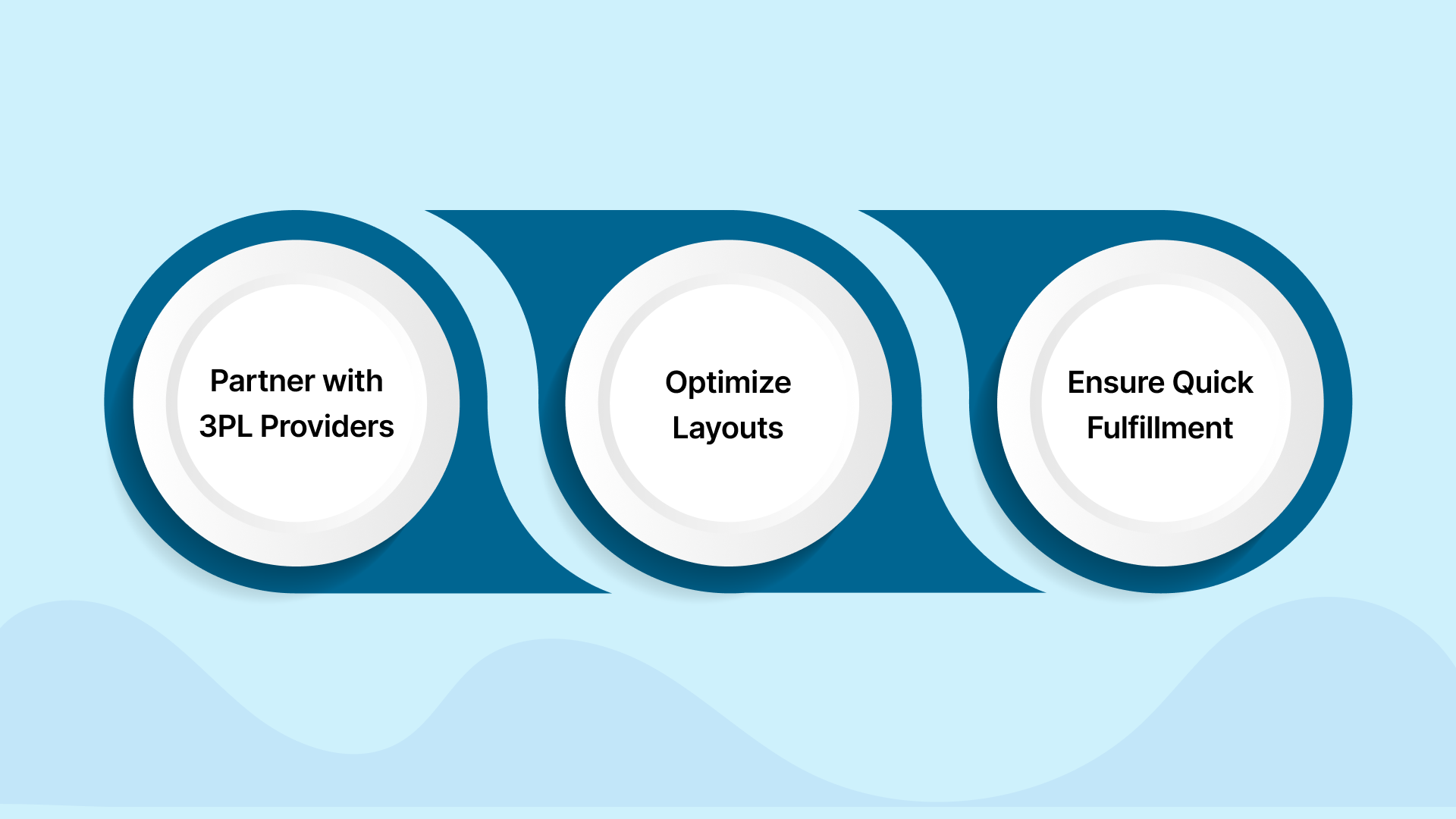Are you looking to meet the growing demands of e-commerce while keeping costs manageable and delivery times short?
The logistics of fulfilling orders, especially across multiple regions, can be overwhelming. With rising consumer expectations and an increasingly competitive market, it’s no surprise that businesses are turning to distributed warehousing to solve these challenges. In the Philippines, Warehouse supply is forecast to expand by about 4% in 2025, signaling an ongoing demand for efficient logistics solutions. Moreover, the Philippines’ e-commerce retail sales are projected to reach a market volume of USD 24.57 billion by 2029, reflecting the growing reliance on online shopping. The benefits of distributed warehousing, including faster deliveries, improved risk management, and cost reduction, are crucial to keeping pace with this expansion.
Distributed warehousing involves storing inventory in multiple locations strategically to minimize shipping distances and times, enabling faster order fulfillment and improved responsiveness to customer demand.
Whether you’re a startup keeping inventory risk low or a growing online retailer trying to meet demand across regions, distributed warehousing helps you maintain control, reduce delays, and scale with confidence.
This leads us to examine the tangible benefits that come with adopting a distributed warehousing strategy, highlighting how it can boost your operations and customer experience.

Businesses are increasingly exploring new approaches to meet customer expectations and streamline their logistics. Distributed warehousing offers a model that enables companies to rethink traditional supply chain management, positioning inventory across a network of strategically located sites. The benefits go beyond convenience and directly impact your bottom line and customer loyalty.
Speed is a key factor in e-commerce success, and with distributed warehousing. As the platform delivery segment is projected to generate USD 1.28 billion in revenue in 2025, you can significantly reduce delivery times, enabling products to reach customers faster, regardless of their location, which improves satisfaction and reduces cart abandonment.
Here’s what that means for your business:
You can position inventory closer to customers, directly improving buyer confidence and service reliability across diverse geographies. If you’re selling across the Philippines or looking to enter nearby markets, this setup helps you meet local expectations without overextending your resources.
E-commerce demand can spike without warning, from sales events to viral product moments. Distributed warehousing gives you the agility to scale up or adjust without significant disruptions.
Here’s how flexibility and scalability work in your favor:
This model supports growth in both existing and new markets without requiring a complete overhaul of your logistics operations.
No business is immune to disruptions, whether from natural disasters, strikes, or sudden demand surges. With a distributed warehousing model, you’re not placing all your risk in one location.
Here’s how it helps maintain continuity:
In high-growth and logistics-challenged regions like the Philippines, this kind of built-in resilience is essential to staying competitive and reliable.
When operating multiple warehouses, maintaining real-time visibility across all locations is crucial. Distributed warehousing, supported by the right systems, gives you better control over stock levels and movement.
Here’s how it improves your operations:
This kind of transparency allows you to operate more efficiently and make faster decisions based on real-time data.
Managing returns is often a costly and time-consuming task. As approximately 20% to 30% of all products purchased online are returned, distributed warehousing enables you to establish local return points, enhancing both the customer experience and your internal operations.
Here’s what you gain:
A faster, more reliable returns process helps you build a reputation for service quality and responsiveness.
Expanding into new markets requires more than just marketing; you need the infrastructure to deliver efficiently. Distributed warehousing enables you to position stock closer to customers in various regions, thereby enhancing your ability to serve those areas.
Here’s why it matters:
With this model, you can compete effectively at the local level while maintaining centralized control.
Next, we’ll discuss the different types of warehouses involved in a distributed system, helping you understand what might work best for your business.
Also read: Good Warehousing Practices and Management Tips

Distributed warehousing encompasses various warehouse types, including fulfillment centers for order processing, cross-docking for quick transfers, and bonded warehouses for customs compliance. Understanding their roles helps optimize your supply chain.
Fulfillment centers are designed for rapid order processing, packaging, and last-mile delivery. These facilities handle high volumes of direct-to-consumer orders, playing a critical role in enabling same-day or next-day shipping. When you integrate fulfillment centers into your distributed network, you can process orders more efficiently and enhance delivery reliability across various regions. As e-commerce warehousing now accounts for approximately 6% of the overall warehousing space in the Philippines, its significance is evident.
Cross-docking facilities receive incoming shipments and immediately transfer them to outbound carriers, reducing or eliminating storage time. On-demand warehousing provides you with temporary access to storage space tailored to your current needs. These models are ideal when you want to reduce long-term inventory costs, manage overflow during peak seasons, or handle short-term distribution in new markets.
Bonded warehouses are authorized storage facilities where imported goods can be stored without immediate payment of duties or taxes. The Philippines has 114 bonded warehouse facilities nationwide. These warehouses are essential for international sellers entering markets like the Philippines, as they enable you to streamline customs clearance and defer import-related expenses. Utilizing bonded warehouses enables you to remain compliant with regulations while maintaining efficient delivery timelines for cross-border orders.
Now that we have a grasp of warehouse types, let’s examine some best practices for implementing distributed warehousing in a manner that ensures long-term success.
Also Read: Different Types of Warehouses and Their Uses

Successfully managing a distributed warehousing model requires a combination of strategic partnerships, warehouse design, and standardized fulfillment processes. The following best practices help you enhance operational efficiency and maintain consistent service across all locations.
Selecting the proper third-party logistics (3PL) partner is crucial for efficiently managing multiple warehouse locations. Here are the key benefits of working with a 3PL provider:
Designing your warehouse layout correctly helps reduce delays, errors, and unnecessary labor. Below are essential layout practices that support smooth warehouse operations:
Reliable order fulfillment depends on having repeatable processes in place across every facility. These are the fulfillment best practices that help maintain accuracy and speed:
Having covered the best practices, we’ll delve into the financial aspects of distributed warehousing and examine the associated costs.
Also Read: What Is a Central Warehouse and Its Role in Logistics
Implementing distributed warehousing requires upfront investments in infrastructure. It incurs ongoing costs, including leases, labor, utilities, and software, which vary based on factors like location, order volume, and level of automation.
Despite the initial spend, distributed warehousing often reduces long-term logistics costs, shorter delivery routes lower shipping expenses, and handling fees. Efficient fulfillment processes also minimize returns and customer service costs. This leads us to evaluate whether distributed warehousing is the right fit for your business.
Distributed warehousing isn’t for every business at every stage. But as your order volume increases, customer expectations rise, and delivery zones expand, central fulfillment alone may no longer meet your operational goals. Here’s how to determine if the distributed model fits your current needs.
If you’re consistently shipping to customers across multiple regions, especially those spanning islands or national borders, it may be time to localize your inventory. When long delivery times start to impact customer satisfaction or increase refund rates, regional fulfillment centers can help reduce delays and improve reliability.
You should also consider distributed warehousing if your business experiences frequent sales spikes, seasonal surges, or promotional campaigns that require rapid fulfillment. The ability to scale quickly without overloading a single facility enables you to maintain performance during demand fluctuations.
And finally, we’ll wrap things up by showing how working with the right partner, like Inspire Solutions Asia, can make the entire process easier and more effective.
Inspire Solutions Asia helps you eliminate the guesswork from warehousing. Whether you’re launching locally or expanding across Southeast Asia, our integrated ecosystem, encompassing fulfillment, sourcing, same-day and next-day delivery, and financing, provides you with the infrastructure to scale with control. Streamline operations, cut delivery times, and reduce logistics overhead with a single trusted partner.
Streamline operations, cut delivery times, and reduce logistics overhead with a single trusted partner.
Book a consultation today and see how Inspire Solutions Asia supports fast, scalable, and cost-efficient e-commerce growth.
Visit inspiresolutionsasia.com
A key benefit is the ability to reduce delivery times and improve customer satisfaction by positioning inventory closer to customers, allowing for faster order fulfillment.
Warehousing offers improved inventory management, faster order fulfillment, reduced shipping costs, increased supply chain efficiency, and enhanced risk management through diversification of storage locations.
E-commerce is vital because it enables direct sales to customers, streamlines the purchasing process, and connects businesses with global markets, enhancing overall distribution efficiency.
E-commerce offers increased market reach, lower operational costs, greater customer convenience, 24/7 availability, and the ability to gather valuable data on consumer behavior.
Distribution channels provide businesses with access to a broader audience, improve product availability, reduce delivery times, enhance customer service, and allow for better market penetration.